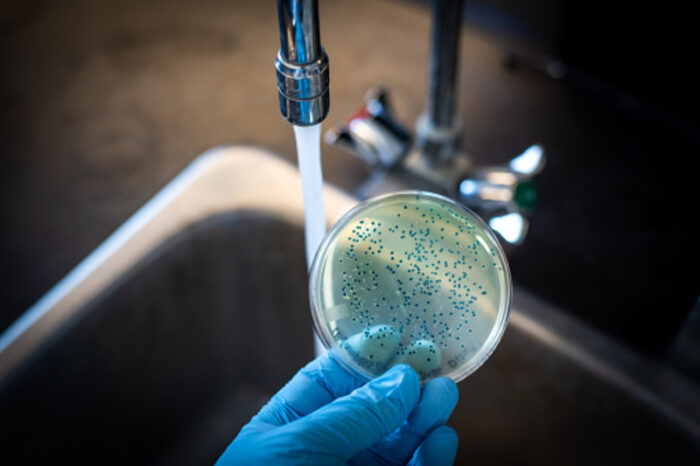Water contamination has become an increasingly concerning issue, with rising levels of PFAS having been found in drinking water sources across the country. In this article, we will take a look at what PFAS are, why they are so dangerous, and how you can protect yourself from their potentially harmful effects. Read on to learn more about this growing water contamination problem and what you can do to protect your family.
Introduction to PFAS Water Contamination
An invisible threat is looming in the water – fluorinated chemicals known as PFAS (per- and polyfluoroalkyl substances). These persistent, man-made chemicals have been used in a variety of industries since the 1940s, and can be found in everything from nonstick cookware to waterproof clothing. They’re even used in firefighting foams.
While PFAS are incredibly useful, they’re also incredibly dangerous. These chemicals can leach into the groundwater and contaminate drinking water supplies. Studies have linked exposure to PFAS with a host of health problems, including cancer, thyroid disease, fertility issues, and more.
The good news is that there are steps you can take to protect yourself from PFAS water contamination. Here’s what you need to know about this growing environmental threat.
The Health Risks of PFAS Contamination

The EPA has declared that PFAS are “PFAS are ubiquitous in the environment and have been detected in public water systems, surface water, groundwater, drinking water wells, and in fish.”
Exposure to PFAS can occur through ingestion, dermal absorption, and inhalation. Ingestion is the primary route of exposure for the general population.
PFAS can accumulate in the body and remain there for long periods of time. They are strongly linked to cancer, liver damage, reproductive and developmental toxicity, thyroid disease, and immunotoxicity. PFAS water contamination lawsuits are being filed by locals who live close to factories and other significant sources responsible for environmental damage.
There is no safe level of PFAS exposure – even low levels can cause health problems. The best way to protect yourself from PFAS contamination is to avoid contact with contaminated water or food.
What Causes PFAS Contamination?
There is no definitive answer to this question. However, some potential sources of PFAS contamination include:
– factories that produce or use PFAS-containing products
– landfills and incinerators that dispose of PFAS-containing waste
– military sites and airports where PFAS-containing firefighting foam has been used
– leaching from PFAS-contaminated water or soil into groundwater or drinking water supplies
How to Test for PFAS in Drinking Water

There are a few different ways that you can test for PFAS in your drinking water. The most common way is to use a home testing kit, which you can purchase at most hardware stores. These kits typically use a chemically treated swab to collect a sample of your water, which is then sent off to a lab for analysis.
Another way to test for PFAS in your drinking water is to have your water professionally tested by a company that specializes in this type of testing. This is often the best option if you’re concerned about potential PFAS contamination, as it will give you the most accurate results. However, it can also be the most expensive option.
The final way to test for PFAS in your drinking water is to simply contact your local water utility and ask them about their testing procedures. Many utilities now test for PFAS on a regular basis, so they should be able to tell you whether or not your water is contaminated.
Whichever method you choose, it’s important to make sure that you follow the instructions carefully and send off your sample as soon as possible. Once you have the results back, if they indicate that there are high levels of PFAS in your drinking water, you’ll need to take steps to filter or remove the contamination before using the water again.
Steps For Protecting Yourself From PFAS In Drinking Water
There are a few steps you can take to protect yourself from PFAS in drinking water:
- Check your local water quality report. This report will tell you if there are any PFAS present in your water supply.
- If you have a private well, have it tested for PFAS. You can contact your state’s water testing laboratory for more information.
- Install a point-of-use filtration system that is certified to remove PFAS from your drinking water. Be sure to follow the manufacturer’s instructions for proper maintenance and replacement of filters.
- Consider using bottled water for cooking and drinking if you are concerned about PFAS in your water supply.
By following these steps, you can help to protect yourself and your family from exposure to PFAS in drinking water.
Conclusion
In conclusion, it is important to be aware of the potential presence and health risks associated with PFAS contamination in water. However, it is also comforting to know that there are steps you can take in order to protect yourself from these chemicals. With the right knowledge and precautions, you can have peace of mind knowing that your drinking water is safe for consumption and free from any adverse health effects associated with PFAS exposure.



1 thought on “PFAS Water Contamination: What You Need To Know And How To Protect Yourself”